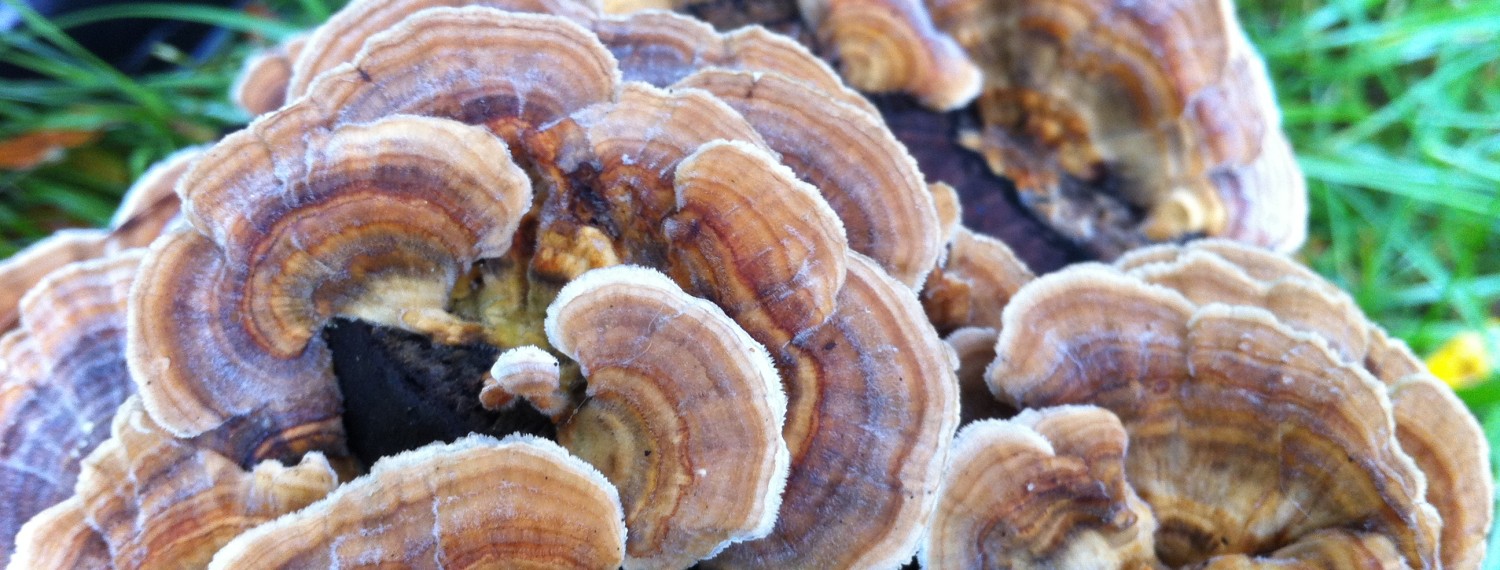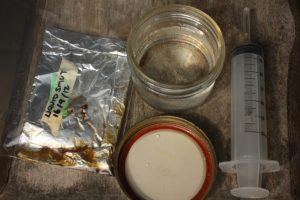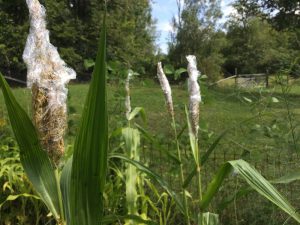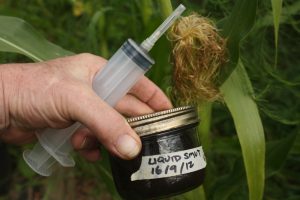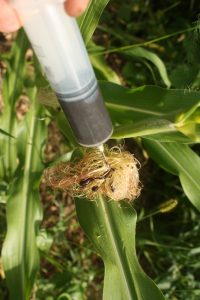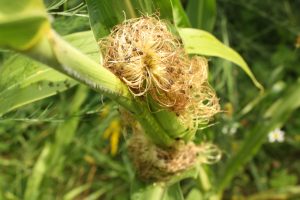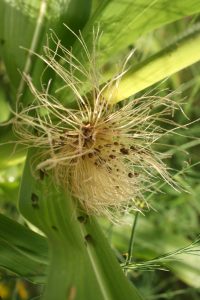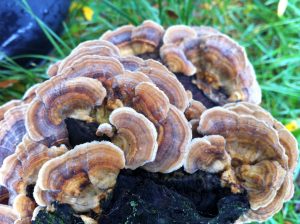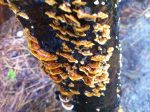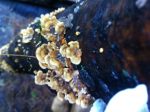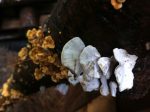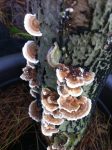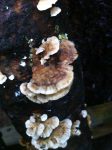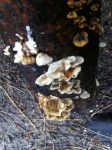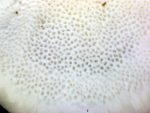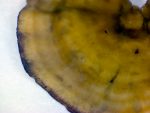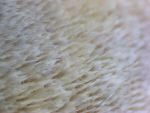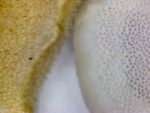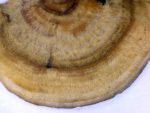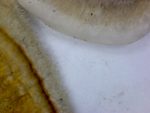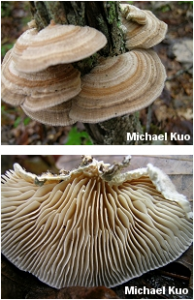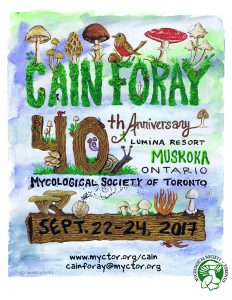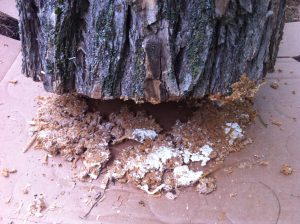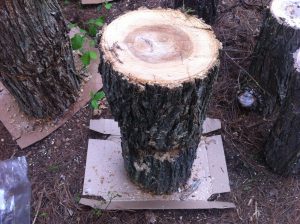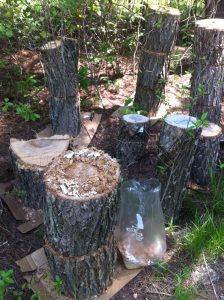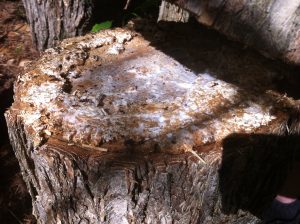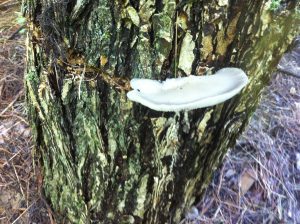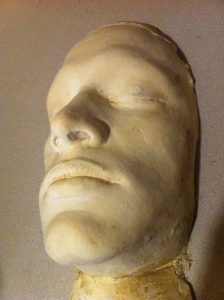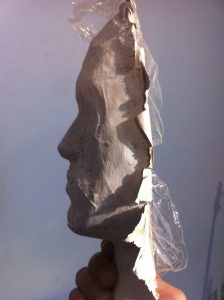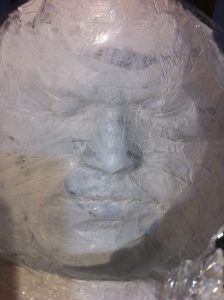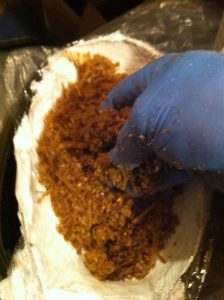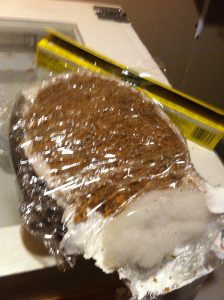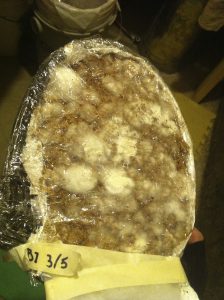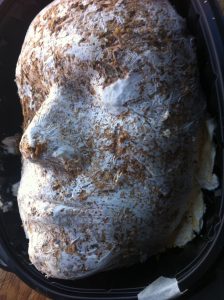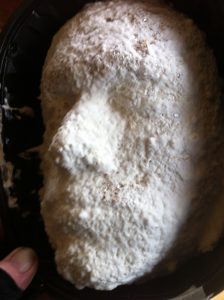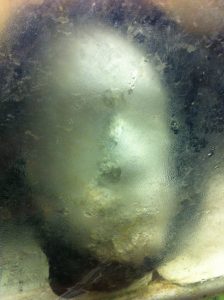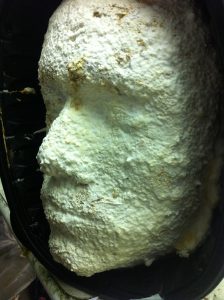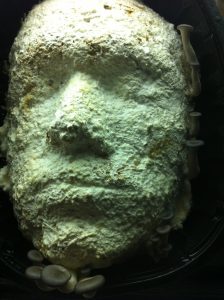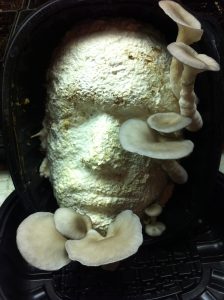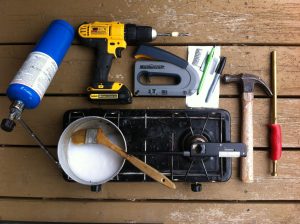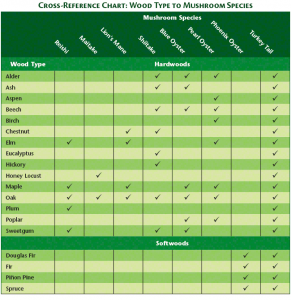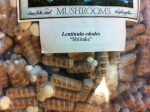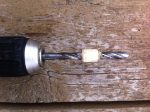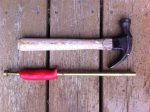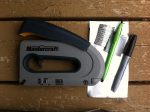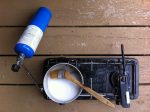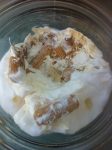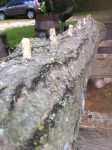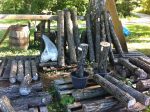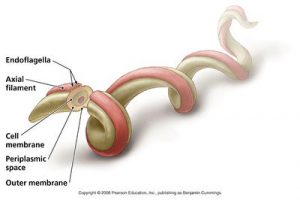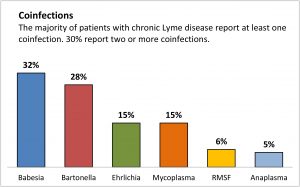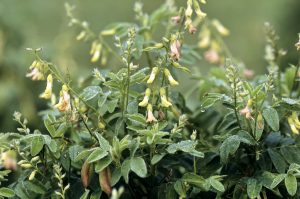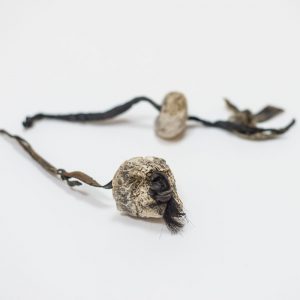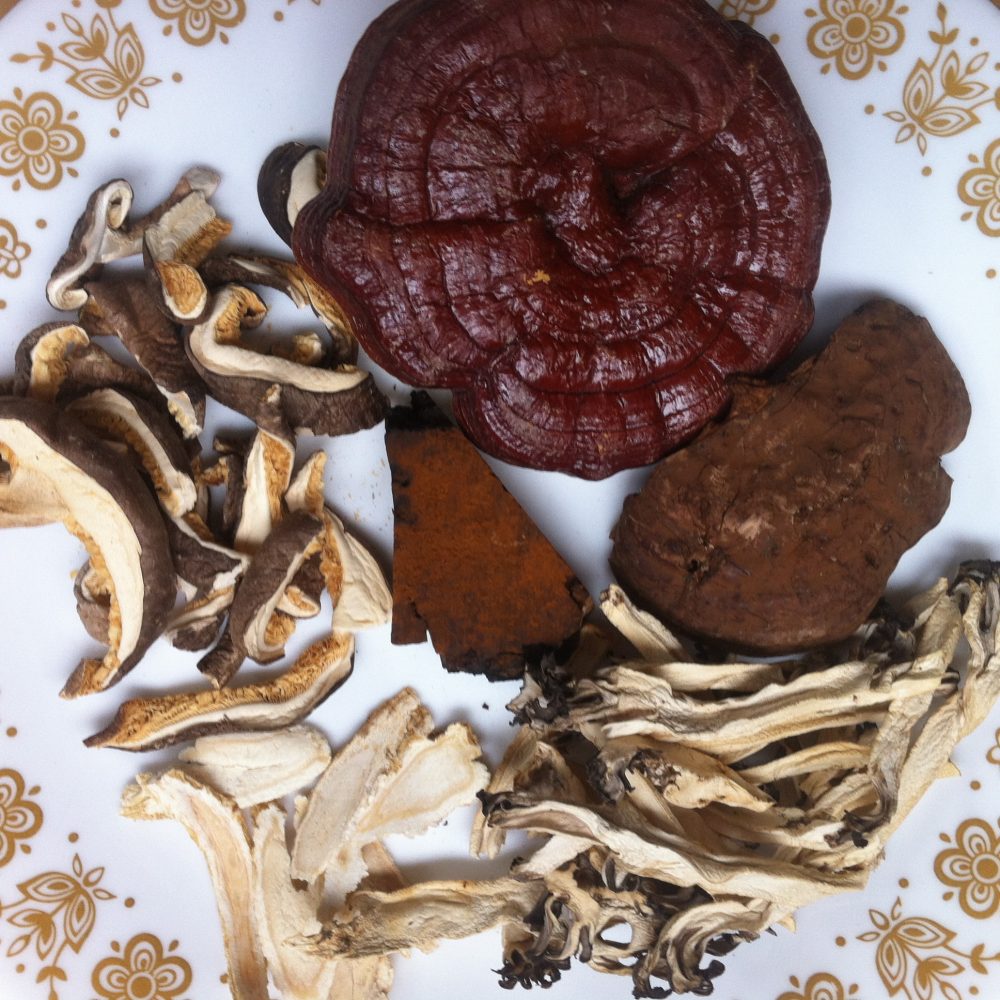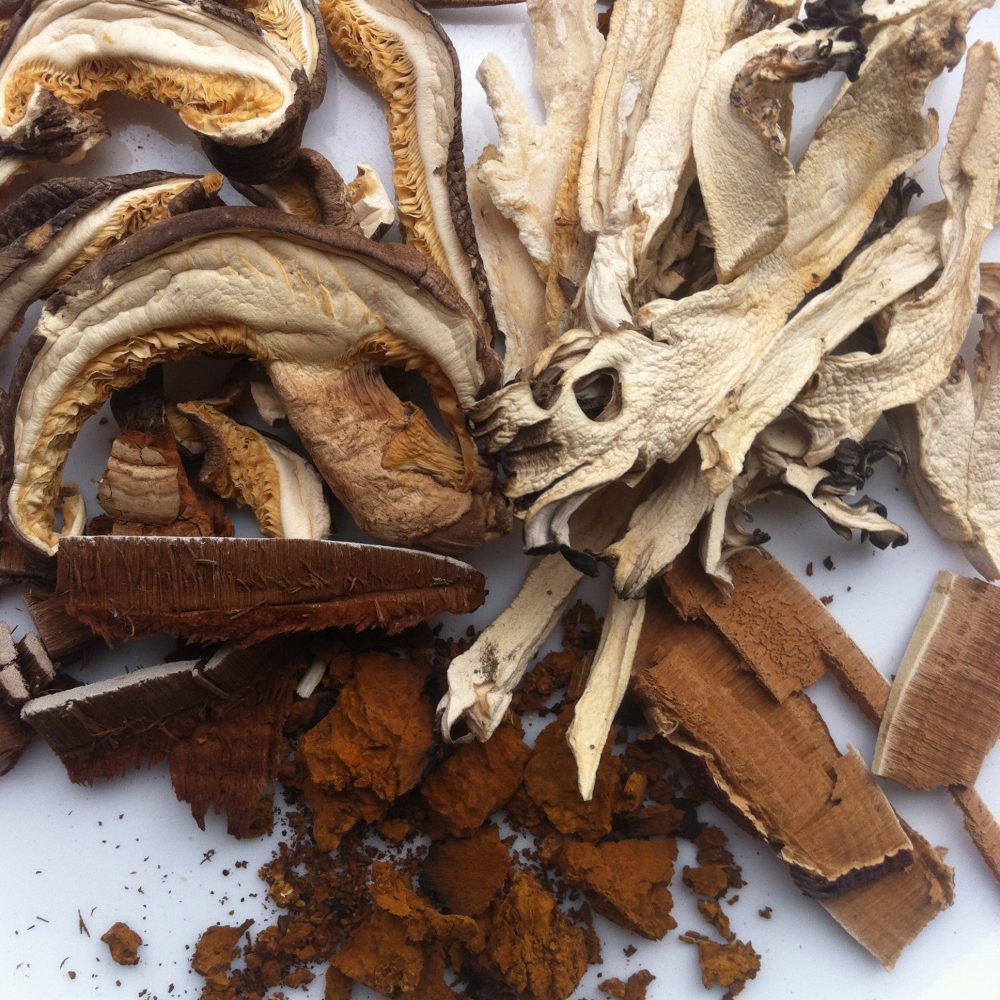The information in this introduction was gleaned from works by M(y)cCoy, Rogers, and Stamets, listed on the MycoResources page. I plan to write individual articles on particular species of interest, as I have already done with Turkey Tail. This article is meant as a general intro to medicinal fungi.
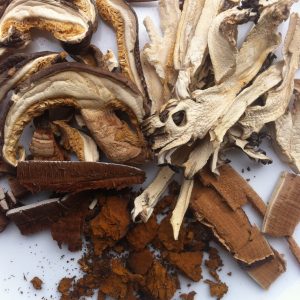 It is often stated that the fungi are more closely related to animals than they are to plants. Their cell walls are made of chitin, like insects and crustaceans, whereas plants cells are made of cellulose and lignin. They consume oxygen and release CO2 just as we do.
It is often stated that the fungi are more closely related to animals than they are to plants. Their cell walls are made of chitin, like insects and crustaceans, whereas plants cells are made of cellulose and lignin. They consume oxygen and release CO2 just as we do.
Where fungi differ from animals is that they are “inside-out”, as it were. While animals are generally self-contained autonomous units which must ingest nutrients to digest them within, fungi grow into their food, extruding digestive enzymes and absorbing the nutrients.
Since fungi in the wild come into direct contact with various microbes, viruses, and other competitive fungi, they have an array of defenses at their disposal. And because, in many ways, their metabolisms are similar to ours, some of these molecules can be used to enhance our health. These powerful substances make up the very structure of the mushroom itself. Of course, as a source of biologically active chemicals, mushrooms create many toxins as well, so it’s important to know the difference. The oft’ quoted maxim applies here: “All fungi are edible, some only once”.
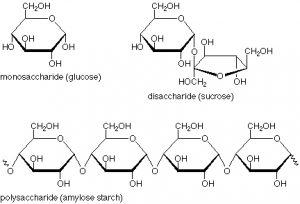 In addition to chitin, mushrooms contain, glucans, mannans, terpenes, and glycoproteins. Polysaccharides combine with proteins to form complex molecules, chains similar to DNA. These compounds have been found to aid the immune system by variously stimulating the growth of disease fighting blood cells, aiding in the detection of pathogens, or modulating the reaction in auto-immune responses, such as inflammation and pain. Terpenes (diterpenes and triterpenes) are aromatic chemicals with medicinal properties of their own which often work synergistically with other compounds, for example facilitating their transport across the blood-brain barrier.
In addition to chitin, mushrooms contain, glucans, mannans, terpenes, and glycoproteins. Polysaccharides combine with proteins to form complex molecules, chains similar to DNA. These compounds have been found to aid the immune system by variously stimulating the growth of disease fighting blood cells, aiding in the detection of pathogens, or modulating the reaction in auto-immune responses, such as inflammation and pain. Terpenes (diterpenes and triterpenes) are aromatic chemicals with medicinal properties of their own which often work synergistically with other compounds, for example facilitating their transport across the blood-brain barrier.![Lentinan is a polysaccharide isolated from the fruit body of shiitake (Lentinula edodes mycelium. Lentinan has been approved as an adjuvant for stomach cancer in Japan since 1985.[1] Lentinan is one of the host-mediated anti-cancer drugs which has been shown to affect host defense immune systems. Lentinan is a polysaccharide isolated from the fruit body of shiitake (Lentinula edodes mycelium. Lentinan has been approved as an adjuvant for stomach cancer in Japan since 1985.[1] Lentinan is one of the host-mediated anti-cancer drugs which has been shown to affect host defense immune systems.](http://www.mycognosis.com/wp-content/uploads/2017/09/Lentinan001-300x175.jpg)
Because chitin is not digestible, medicinal mushrooms must be processed for use. Depending on the species and the intended use, they can be cooked, dried, made into infusions and tinctures, or burnt for their smoke and ash. Many, like Shiitake and Maitake, are valued as delicious gourmet mushrooms. Others like the Birch Polypore and Artists’ conk are bitter and woody-textured. These medicinal compounds are found in both the mycelia and fruiting bodies of the fungi. According to Rogers’ Fungal Pharmacy most edible mushrooms have some medicinal characteristics in addition to their nutritional value.
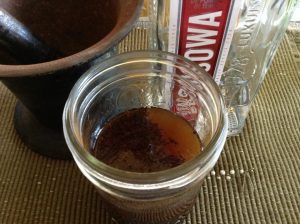 Not all these compounds are water soluble so making a tea might not suffice to extract all the benefits. A common method for extracting medicine from fungi is making a dual extract tincture. In a jar, cover dried broken/powdered mushrooms with 4-5 times their weight in high proof alcohol (30g fungus/120-150g alc.) and soak for at least a month, agitating periodically. After the alcohol soluble constituents have been extracted, press out the solution (I use an Aerobie AeroPress which also makes great coffee) and put the remaining solids (the marc) in a pot with a volume of water equal to the alcohol solution. Weigh the pot and record the weight. Now add 4 times that amount of water and place the pot in boiling water. Simmer the mixture until the liquid is reduced to the original volume (and weight). Press out the liquid and mix the two equal parts together in a dark glass bottle. The alcohol content should be sufficient to preserve the tincture.
Not all these compounds are water soluble so making a tea might not suffice to extract all the benefits. A common method for extracting medicine from fungi is making a dual extract tincture. In a jar, cover dried broken/powdered mushrooms with 4-5 times their weight in high proof alcohol (30g fungus/120-150g alc.) and soak for at least a month, agitating periodically. After the alcohol soluble constituents have been extracted, press out the solution (I use an Aerobie AeroPress which also makes great coffee) and put the remaining solids (the marc) in a pot with a volume of water equal to the alcohol solution. Weigh the pot and record the weight. Now add 4 times that amount of water and place the pot in boiling water. Simmer the mixture until the liquid is reduced to the original volume (and weight). Press out the liquid and mix the two equal parts together in a dark glass bottle. The alcohol content should be sufficient to preserve the tincture.
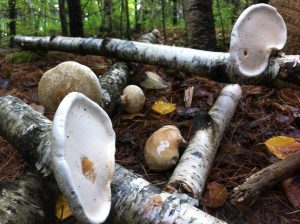 I used to think that powerful natural medicines came from deep in the Amazon jungle or from the far east. I have been pleased to find that many of the most prized medicinal fungi can be found in abundance in our own Boreal forests. In future articles I hope to feature some of these healing mushrooms including Turkey Tail, Birch Polypore, Tinder Conk, Artists’ Conk, Maitake and Chaga.
I used to think that powerful natural medicines came from deep in the Amazon jungle or from the far east. I have been pleased to find that many of the most prized medicinal fungi can be found in abundance in our own Boreal forests. In future articles I hope to feature some of these healing mushrooms including Turkey Tail, Birch Polypore, Tinder Conk, Artists’ Conk, Maitake and Chaga.
